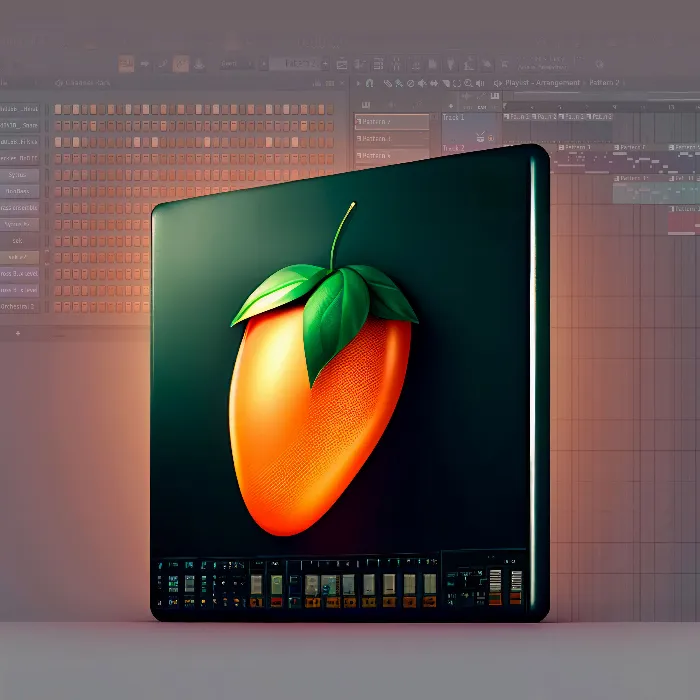Welcome to my FL Studio tutorial! In this guide, I want to show you which important settings you can make in FL Studio to get the most out of your software for music production. There are many options that can significantly enhance your user experience. Let's take a deep look at the settings together and find out how you can optimally manage your music world with FL Studio.
Main Insights
- You can make basic audio and MIDI settings to optimize your hardware.
- The right driver settings are crucial for the performance and stability of your projects.
- Adjusting the display settings can significantly improve your workflow.
Step-by-Step Guide
To make the most of the settings in FL Studio, I start with the basic audio and MIDI settings.
Adjusting Audio and MIDI Settings
When you open FL Studio, go to the options in the top menu bar first. Here you can directly select the settings.
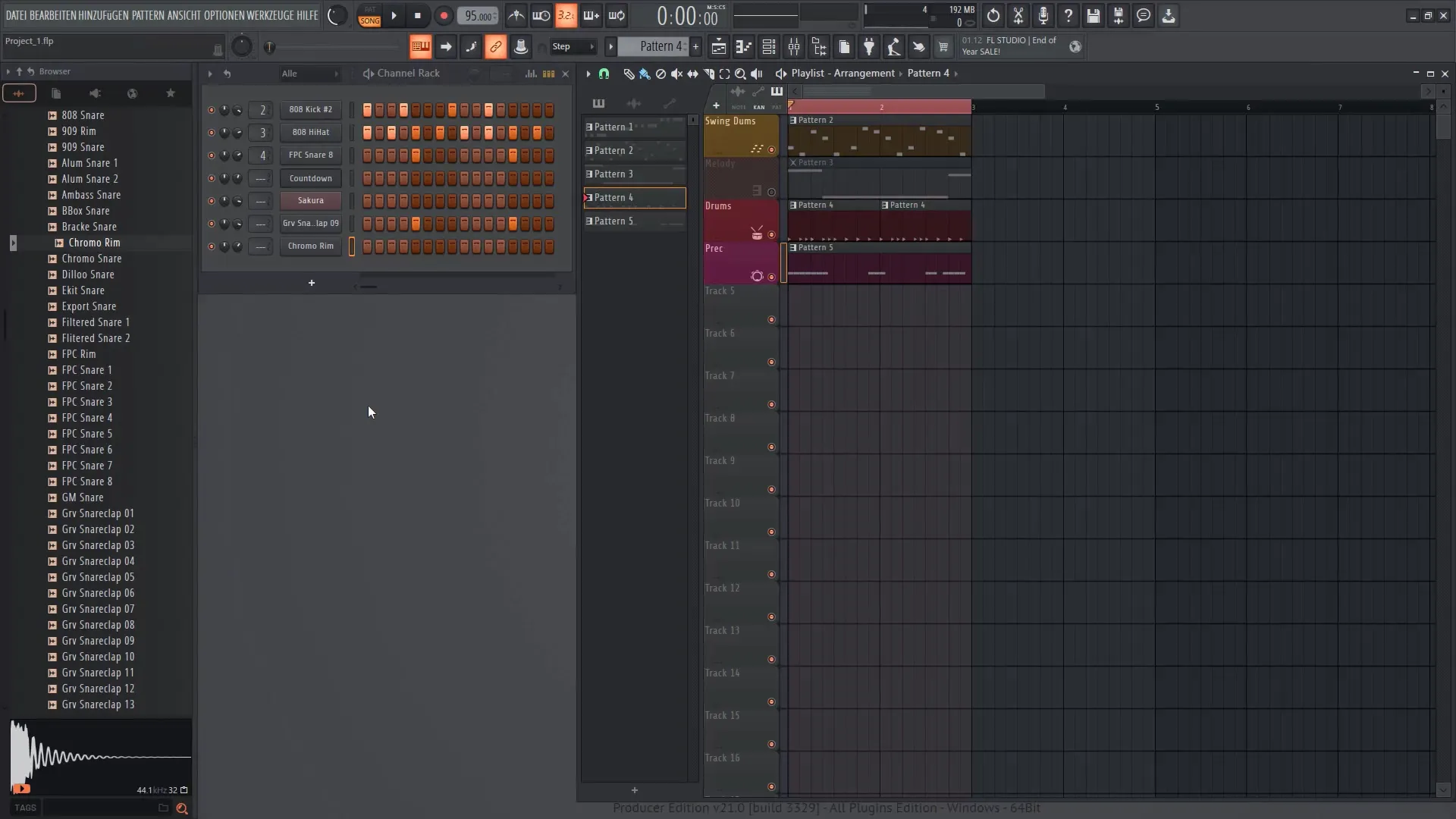
When installing FL Studio, you receive a default configuration that I want to use as a base today. First, we look at the output. The output shows you the active audio outputs you use to play your music. If your keyboard is active, you can play the sounds directly in FL Studio.
It is important to configure the inputs as well. Here you can connect additional hardware, such as a MIDI controller or a keyboard. I will now show an example by connecting an Akai MPD 18. Once you have connected the hardware, you can see it directly in FL Studio and check its activation.
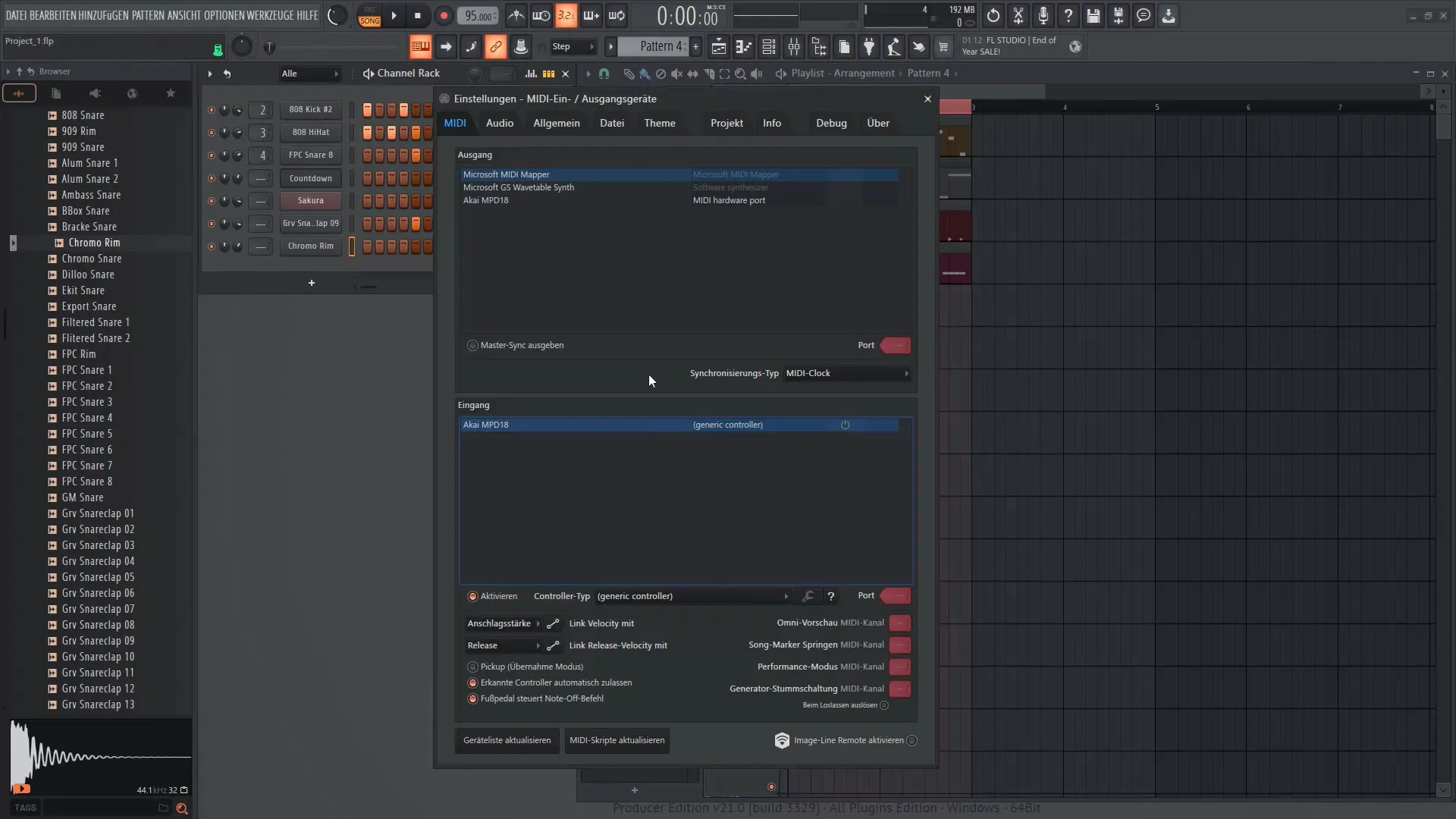
If you want to use older MIDI devices, you have the option to manage the MIDI ports. Click on the corresponding window to access the MIDI settings area.
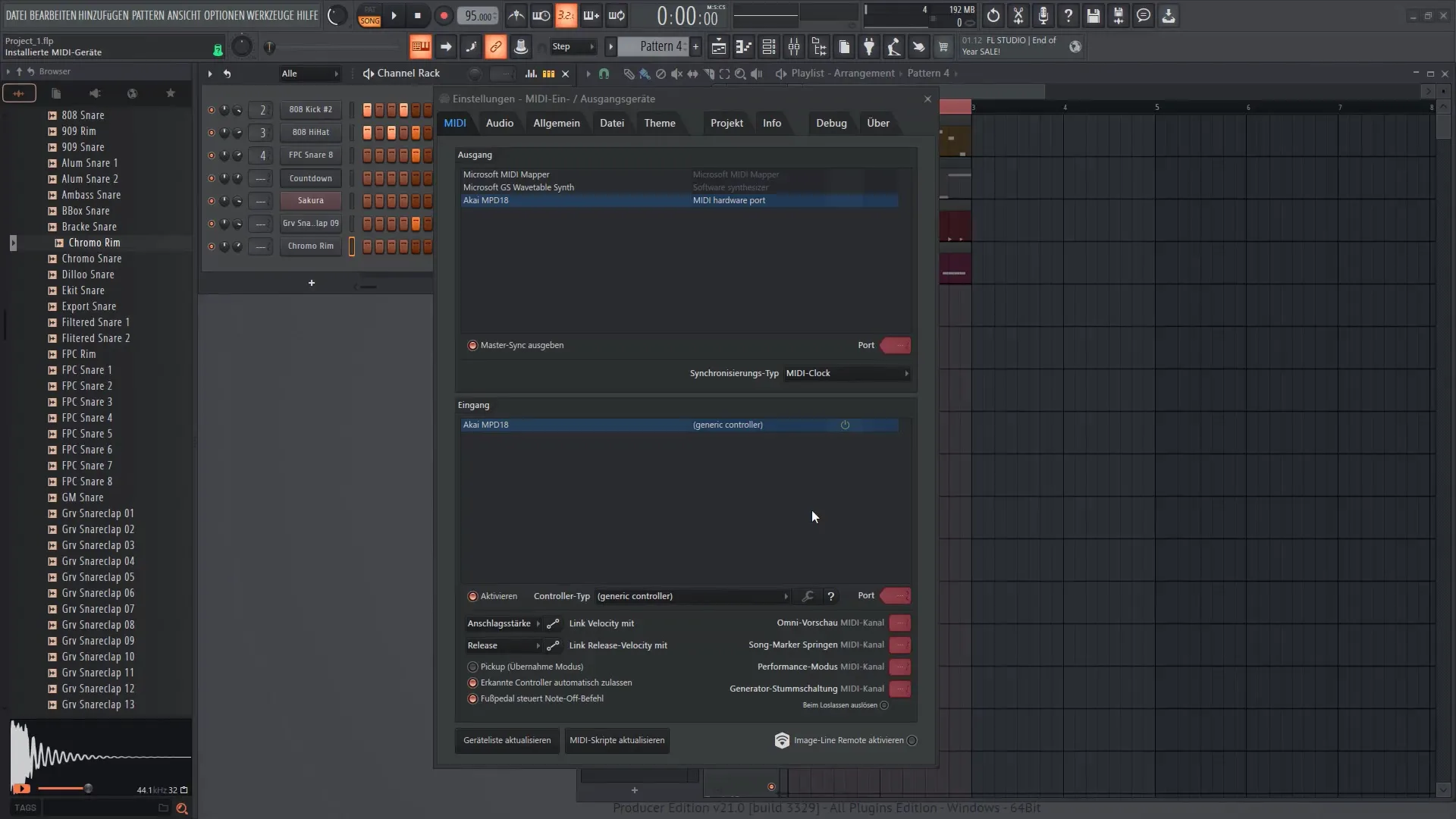
Optimizing Audio Settings
Under the "Audio" tab, you will find most of FL Studio's audio settings. Here you can select the primary sound driver that provides you with the best performance. By choosing the right driver, you can start producing your music directly.
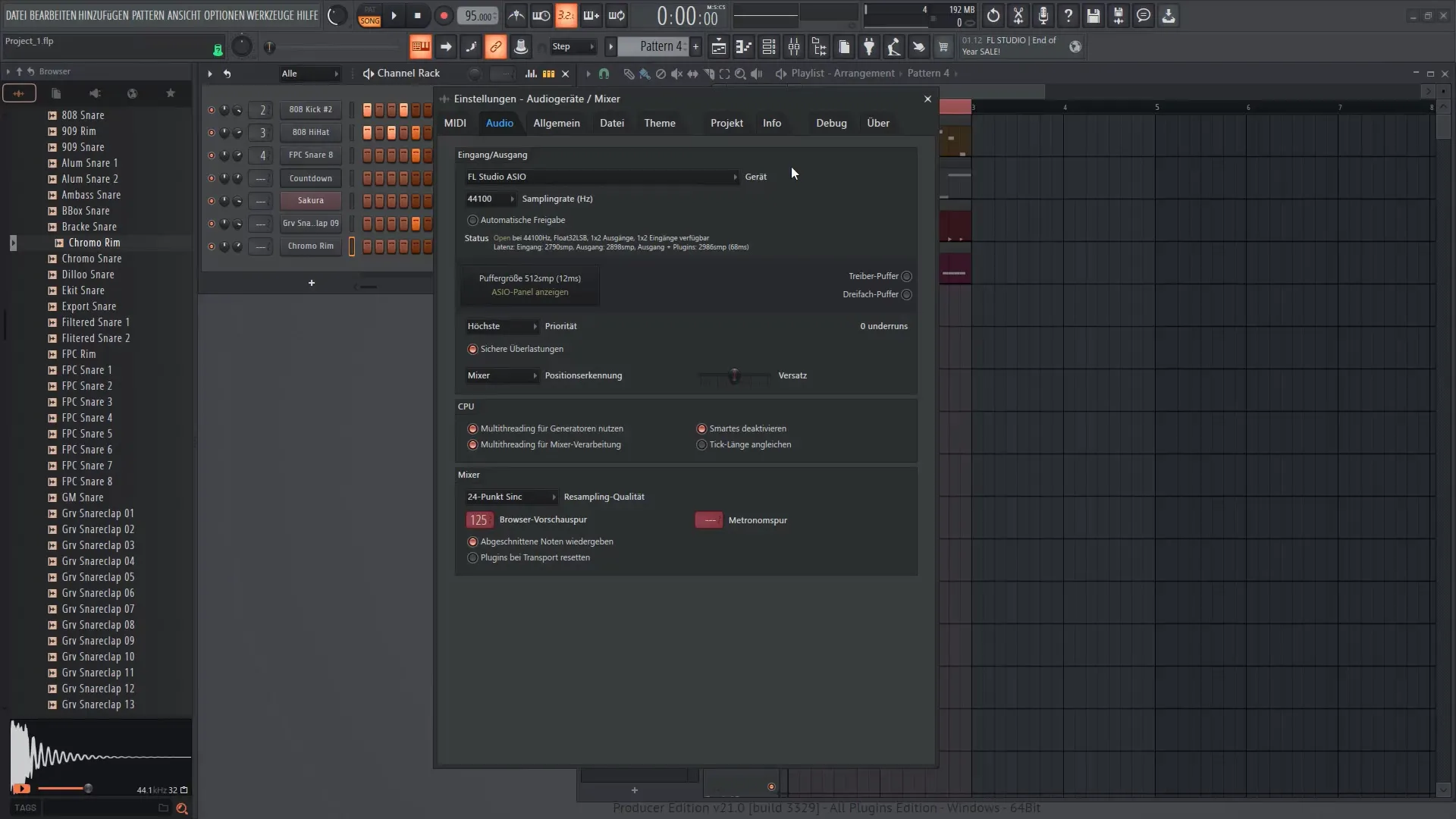
Make sure to set the buffer size optimally. A too large buffer size can cause delays, while a too low setting can create crackling sounds. Try out different values until you find a balanced setting.
If you are working with an external audio interface, I recommend using the FL Studio ASIO driver for the best audio performance. Through the ASIO panel, you have access to all the important settings.
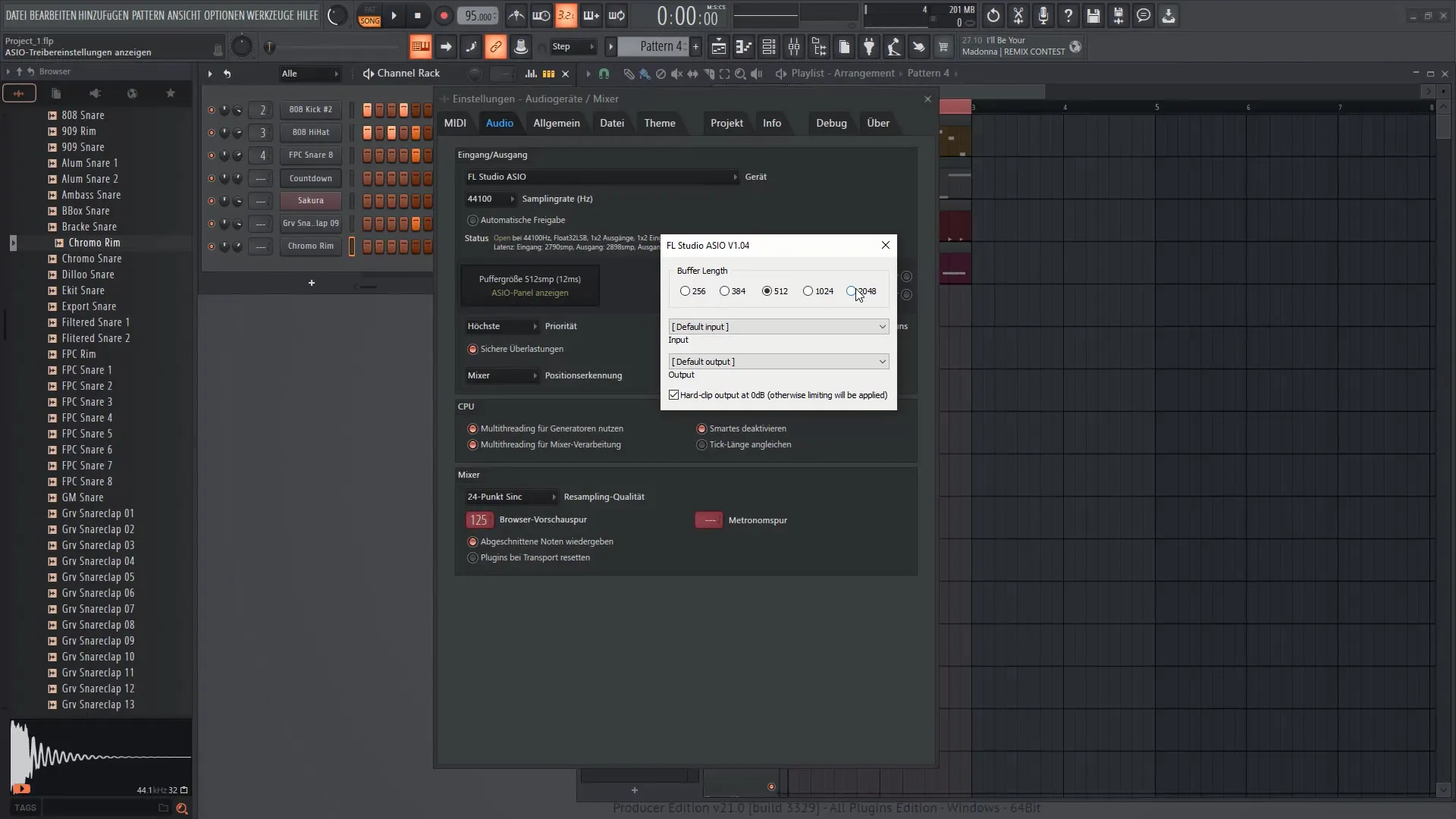
CPU Load and Multithreading
It is also important to make some CPU performance settings. In the CPU settings, you can enable multithreading options to optimize processing for different instruments and mixer. Reduce CPU load by activating only the necessary tracks in the mixer.
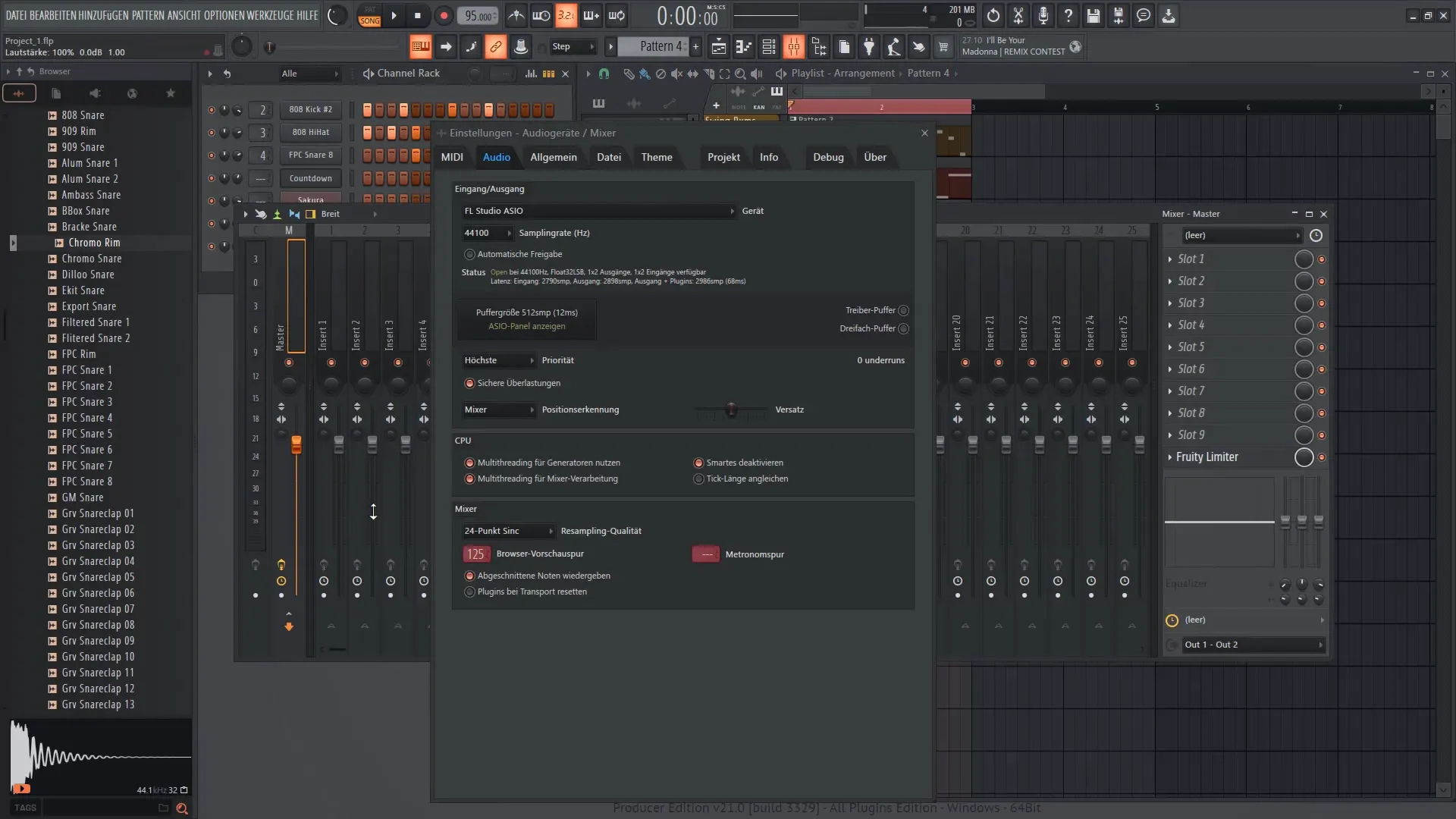
Adjust Display Settings
Go to the general settings to customize the user interface. If you are using a high-resolution monitor, you can set the PPI (Pixels per Inch) to ensure that Windows and FL Studio are displayed optimally. This way, FL Studio looks sharp even on high-resolution screens.
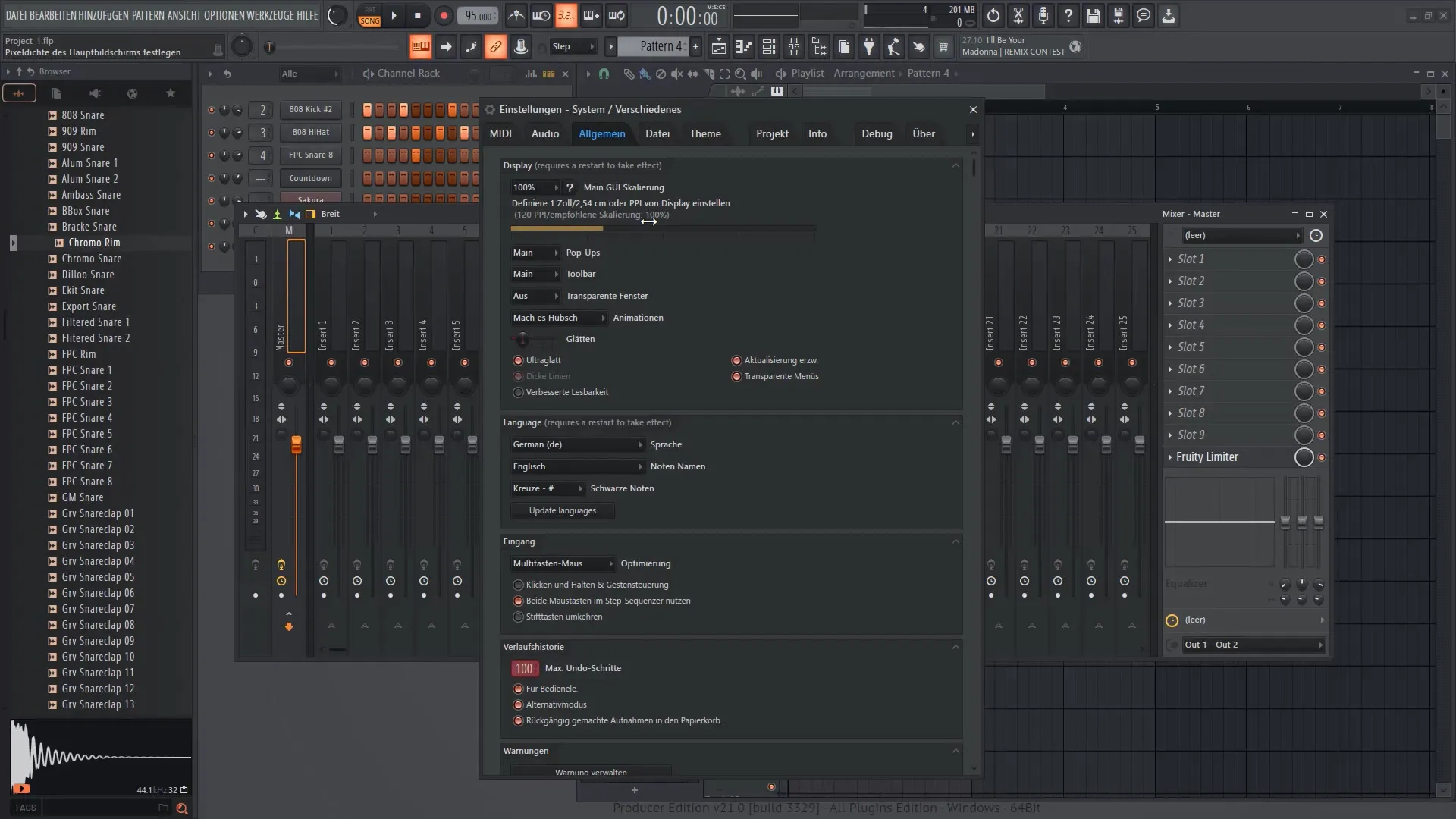
You can also adjust various animations and popup settings. These small adjustments can help FL Studio run smoother and more user-friendly.
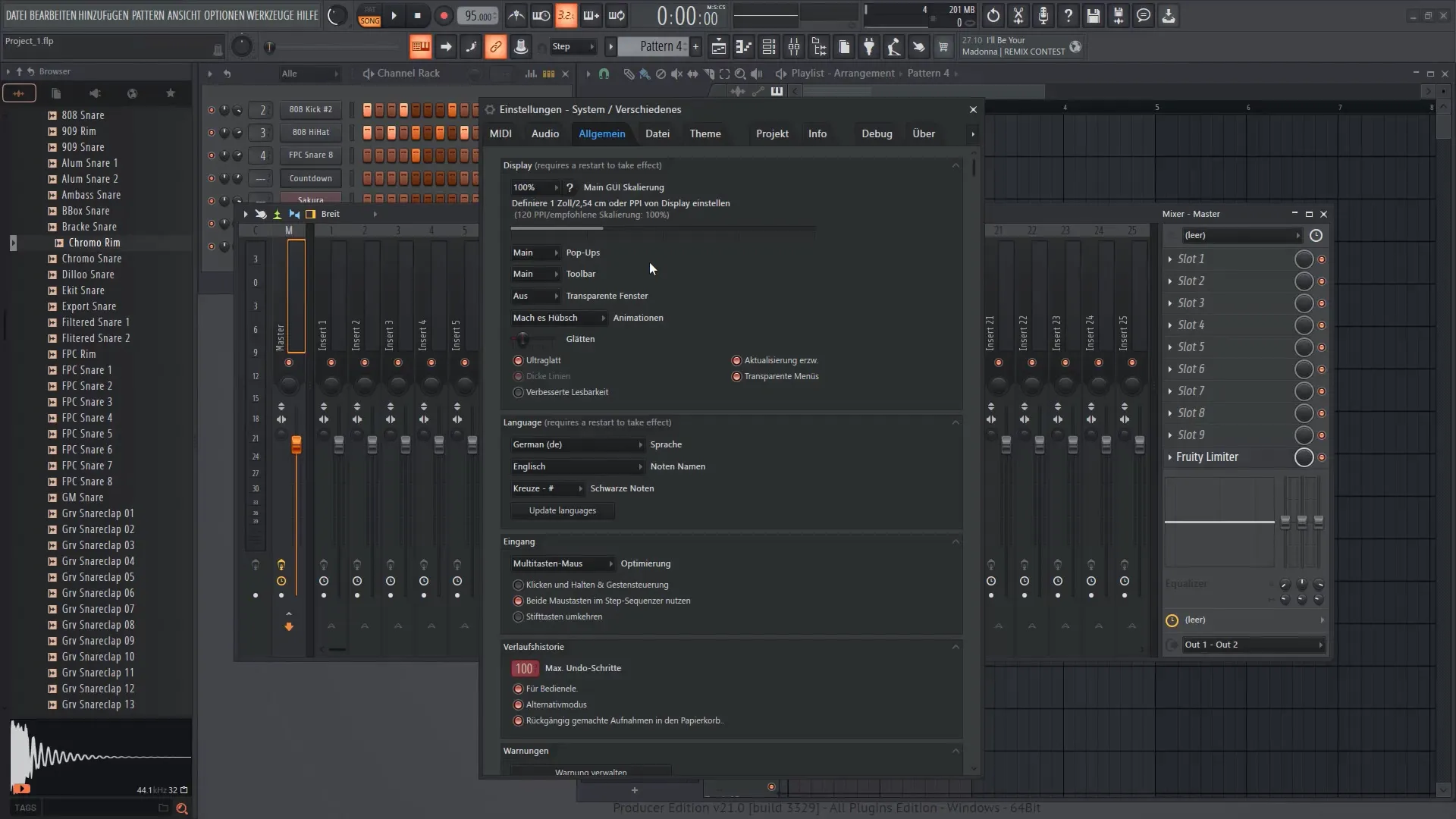
Storage and Project Management
It is also important to automate storage options. You can set how often your project should be saved automatically. This is particularly useful to prevent data loss.
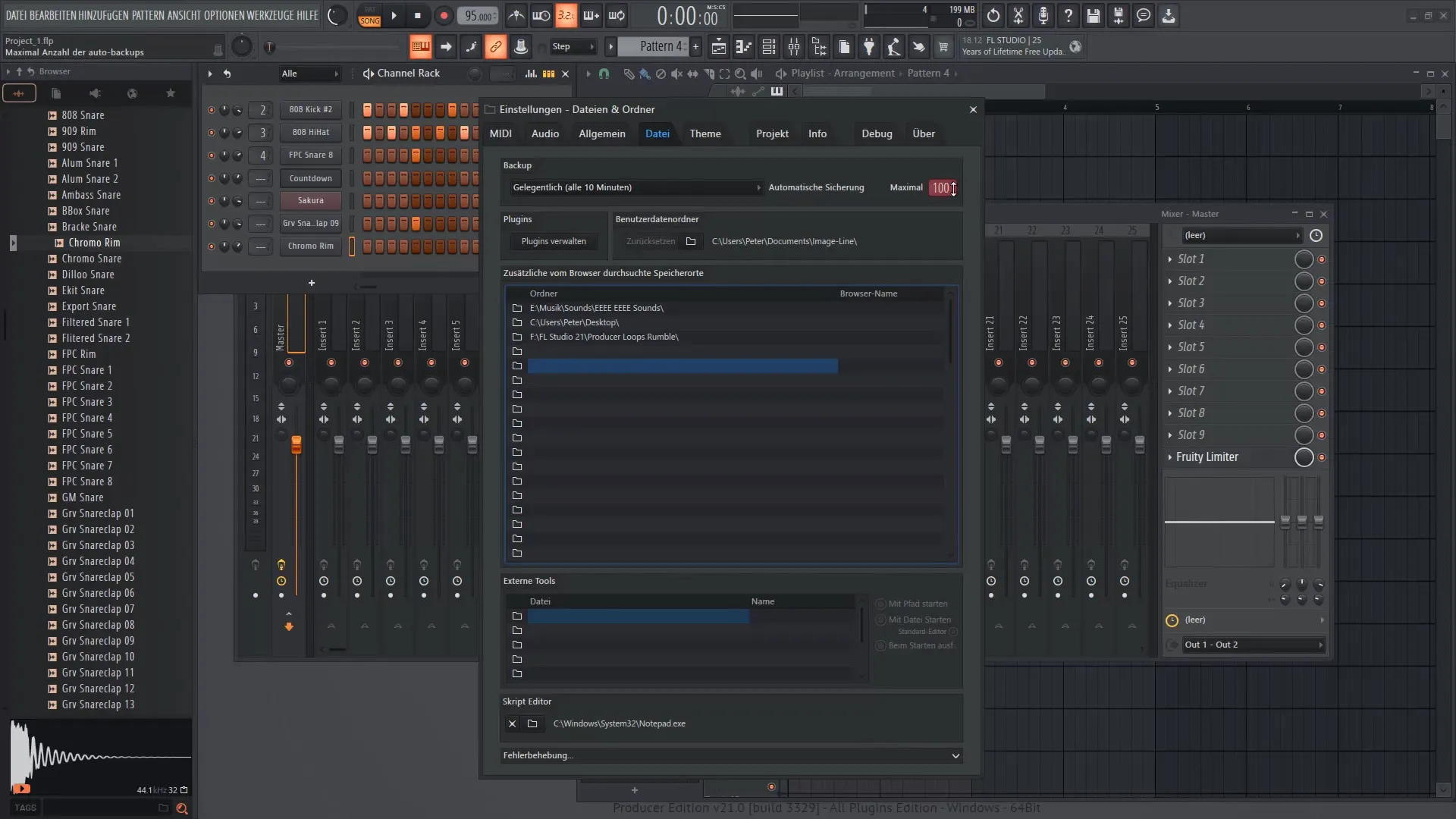
Make sure your plugins are managed correctly by adjusting the plugin settings and configuring the necessary folders. This way, you can quickly access your samples.
Conclusion and Further Information
In summary, I have shown you how to make basic settings in FL Studio 21 to optimize your user experience and improve the software's performance. Experiment with different settings to customize the program to your specific needs and hardware.
Summary
In this guide, you have learned the key settings to use FL Studio 21 optimally. Now you know how to adjust audio and MIDI settings, optimize CPU load, and save your projects securely.
Frequently Asked Questions
How do I open the settings in FL Studio?You can open the settings in FL Studio by clicking on "Options" in the top menu bar or pressing the F10 key.
How do I adjust the audio buffer size?You can adjust the audio buffer size in the Audio section of the settings. Look for the value that offers the best balance between latency and sound quality.
How can I manage my plugins?You can manage your plugins in the Plugin section of the settings and choose specific folders where your samples are stored.
